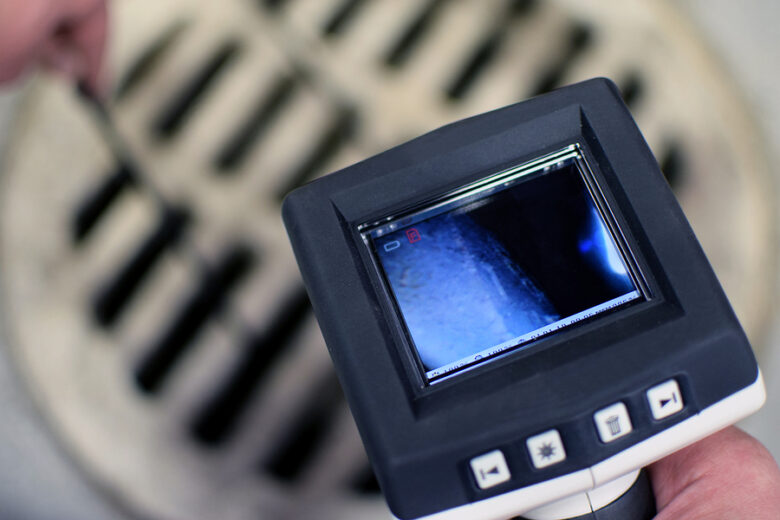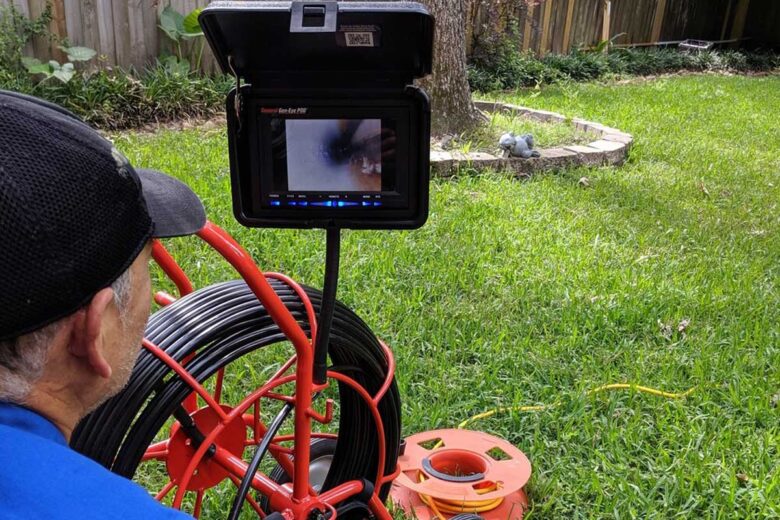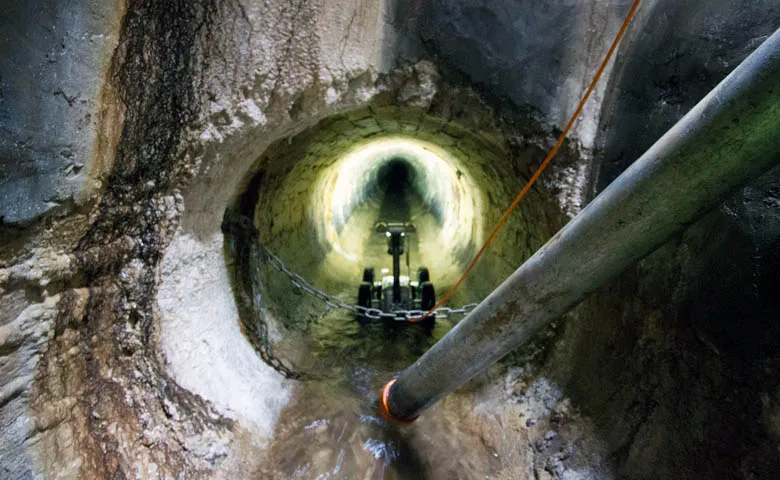You’ve probably dealt with clogs and backups in your drains before. Rather than struggling with liquid drain cleaners or snaking tools, it may be time to call in the pros with specialized plumbing equipment like drain cameras. Have you ever wondered what’s going on down there? Drain cameras provide a live video feed so plumbers can diagnose problems and pinpoint clogs. Before you assume it’s built-up gunk, there could be pipe damage or tree root intrusion you didn’t even know about.
Drain cameras are a game changer for any homeowner tired of guessing what’s causing slow drains or backups. With a quick inspection, plumbers can get right to the root of the issue (sometimes literally!) and resolve problems efficiently. If there are any pipe repairs or replacements needed, the camera footage provides visual evidence so you know exactly what needs to be fixed and why.

Source: h2pro.com.au
Contents
Why Use a Drain Camera?
Why bother with a drain camera? There are a few good reasons:
- Diagnose clogs or blockages. If you’ve got a slow drain or backup, a camera can pinpoint the location and cause of the problem so you know exactly what needs fixing.
- Check pipe condition. Drain cameras allow you to inspect the inside of pipes for any damage, deterioration, or defects so you can perform repairs or replacements before leaks or bursts happen.
- Locate pipes. If plans or records don’t show where pipes run, a drain camera can help trace pipes, locate connections, and find entry points.
- Inspect sewer lines. A drain camera is the only way for sewer lines to check if tree roots have infiltrated or if pipe walls show signs of corrosion or cracks. Early detection of sewer line issues can save thousands in repair costs.
Using a drain camera for routine maintenance and inspections makes sense. While not the most glamorous of tools, a drain camera provides visual information to help identify and resolve plumbing problems before they become plumbing disasters. For the savvy homeowner, that’s worth investing in.
Types of Drain Cameras Available
When it comes to drain cameras, you’ve got options. The two main types are:
- Rigid cameras: These are perfect for inspecting drains like sewer lines. They have a stiff cable and can extend over 100 feet. Rigid cameras provide the most explicit images but can be tricky to maneuver.
- Flexible cameras: More versatile and easier to use, flexible cameras have a fiber optic cable that can bend around corners. They typically extend up to 50 feet. Flexible cameras may produce slightly fuzzier images but are ideal for snaking through pipes in tight spaces.
Both types usually come with a real-time monitor to see what’s going on in your drains. Some even have recording capability, allowing you to review and share footage.

Source: homeguide.com
Key Features to Consider in a Drain Camera
When shopping for a drain camera, consider these key features:
Type of Camera
- Rigid or flexible: Rigid cameras provide better control, but flexible cameras can navigate tight bends. Choose based on your needs.
Camera Size
- Larger cameras typically have better lighting and higher resolution but may not fit in smaller drains. Measure your drains to determine the correct size.
Video Quality
- Higher-resolution cameras with built-in lighting provide more apparent footage to identify blockages or damage. Look for at least 720p HD video quality.
Additional Features
- DVR recording allows you to save the footage for future review.
- Still, image capture lets you document any issues found.
- On-screen measurement tools help determine the size and location of any necessary repairs.
- A durable, waterproof design is essential for drain inspections. Look for at least an IP67 weather resistance rating.
How to Operate a Drain Camera
Operating a drain camera to inspect and clear clogs in plumbing lines is pretty straightforward.
Equipment
You’ll need a drain camera, an inspection camera, or a plumber’s snake. This flexible cable with a camera on the end can be fed through drains and pipes. You’ll also want protective gloves, eye gear, and appropriate tools like pliers or a wrench to access drain lines.
Accessing the Drain Line
Locate the cleanout or drain access point closest to where the clog is suspected. Remove the cover plate and feed the camera cable into the opening. Gently push the cable into the line, twisting and turning as needed to navigate bends in the pipe.
Monitor the Camera
As the camera moves through the pipe, monitor what the camera sees on the connected display screen. Look for any obstructions, damage, leaks, or other issues. Measure the distance of any clogs or defects relative to an access point to determine where repairs need to be made if necessary.
Optional Recording
For documentation, you can record video footage or capture still images as the camera traverses the line. Some drain cameras have built-in recording functions to save footage directly to SD cards or flash drives.
Retrieving the Camera
Once the inspection is complete, slowly and steadily pull the camera cable back out of the plumbing line. Be careful not to get the camera caught or tangled, especially on any defects or clogs you encounter. Rewind the cable onto the reel or holder to store it for subsequent use.
With some practice, operating a drain camera can become second nature.

Source: cleantechloops.com
Conclusion
So there, you have everything you need to know about drain cameras to make an informed decision. These high-tech devices can save you a ton of time, money, and hassle by inspecting your plumbing without tearing it into walls or digging up yards. Whether a homeowner is dealing with a clog you can’t clear or a plumber looking to up your game, a drain camera deserves serious consideration. It is truly invaluable to see precisely what’s going on, locate the problem, and determine the best way to fix it. Do your research, weigh the options based on your needs and budget, then plunge into the futuristic world of drain cameras. Your pipes will thank you, and you’ll wonder how you ever lived without one.
